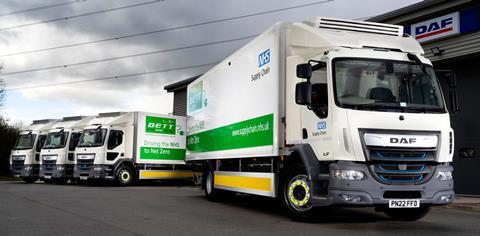
Operators can now calculate the range, charge times and environmental benefits of battery electric trucks via a new web-based resource.
Cenex said the portal will give fleet and transport managers the confidence that electric vehicles can meet operational demand by calculating range and charging times.
It is taking data from the 12-month, government-funded Battery Electric Truck Trial (BETT), which has deployed 20 DAF Electric LFs to a range of public bodies.
The website will also provide guidance pages, which introduce different aspects of battery electric trucks, from policy trends to practical guidance on assessing and implementing the vehicles in fleets.
Cenex said fleet managers involved in the trial expected the trucks to considerably improve air quality and the driving experience, but they had concerns around their ability to achieve the quoted range.
The BETT trial and portal will look to alleviate these concerns by publishing live data, updated on a daily basis, such as total miles travelled, energy consumption and vehicle range.
Steve Carroll, Cenex head of transport, said: “Although heavy good vehicles are a small proportion of the UK vehicle parc, it is important that they are decarbonised because they make a relatively high contribution to CO2 emissions due to their high mileages and low fuel economy.
“Electric HGV uptake is expected to increase in the coming decade; product availability is improving, and the economic case is strengthening.
“Learnings from this trial will be shared through the BETT portal so that fleets and policy makers can understand how heavy duty EVs can be integrated into operations as well as providing valuable user insights to infrastructure and vehicle technology providers,” he added.
The UK has set targets to phase out non-zero emission HGVs up to 26 tonnes in 2035, and all non-zero emission HGVs by 2040.














